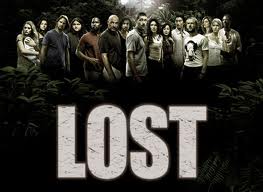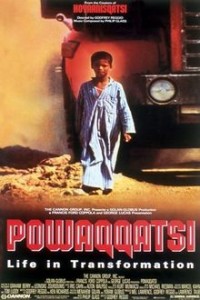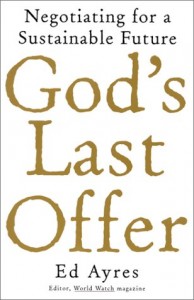Apr 15
- These Quotations are presented here in the spirit of discussion and dialogue.
- They do not necessarily represent the views of Overpopulation Insights
- A selection of links is available for further information and study
Empowering Women
When it is her only opportunity in life, a woman will become a Mother many times over. But with access to opportunities to run companies, influence society, advance politically women tend to have fewer children — by choice. This observation does not require a fancy degree or long, expensive ‘study’. We only have to look at developed countries to see this playing out very clearly. A Mother’s access (not only a woman’s access) to financial independence and political empowerment will do far more to curb population growth than a million other ‘solutions’ dreamed up by those who are not connected to the realities of creating new human beings.
UltimateOutcasts.com
Education and Women
Education is one the primary ways to escape poverty and improve the quality of life. According to a recent article in TIME Magazine, one additional year of secondary education can increase salaries for girls by 15-25%. In general, educating girls has a profound effect on reducing overpopulation and child marriage. Girls educated for seven or more years, on average, marry four years later and have 2.2 fewer children as per data from the Girl Effect.
Jolkona Foundation
Paul Ehrlich and Technology
The Scientist: It’s hard to dispute that resources will become scarcer if the human population continues to grow. But there’s a pervasive optimism that ingenuity and technology will result in more efficient ways to use, recycle, or find replacements for these resources.
Paul Ehrlich: They’ve been saying that ever since I’ve been in this game, which is now 60 years, roughly. In 1968 they were saying we could easily support five billion people. Well, we’ve got seven billion now, and we’re not supporting them. What I’ve always said in response to “technology will take care of it” is: why don’t we see technology take care of the people we have today, before we talk about how easy it will be to take care of more people?
No person who can count up to 20 without taking off their shoes doubts the basic premise that a population can outgrow its resources. If you continue growth at today’s rate, there will be more people than elementary particles in a few thousand years. There’s no question at all that there are limits to growth. The issue is: what are they? The Hall and Day paper basically revisits some of the earlier data and suggests, as does everything in the world that is happening today, that not only are we reaching the limits, but we’re already past the long-term carrying capacity of the planet.
The Sceintist.com
Why Civilizations Collapse
Zen masters are known for being practical, honest and direct. That Murphy fits that profile was obvious in his responses when I asked for comments on the 12 key elements in “ The coming Population Wars: 12-bomb equation ,” my column on evolutionary anthropologist Jared Diamond’s 2005 Pulitzer prize winner, “Collapse: How Societies Choose to Fail or Succeed.” In it Diamond paints a dark scenario:
“One of the disturbing facts of history is that so many civilizations collapse,” warns Diamond. So many “civilizations share a sharp curve of decline. Indeed, a society’s demise may begin only a decade or two after it reaches its peak population, wealth and power.” Diamond’s 12-part equation reflected the Pentagon’s 2020 global warfare scenario: “More people require more food, space, water, energy, and other resources,” resulting in “warfare defining human life on the planet,” the end of economic growth and capitalism, even civilization.
Murphy is one of those obsessed souls, like McKibben, who refuses to accept Diamond’s seemingly inevitable scenario. Instead, Murphy keeps fighting to change the course of history, in his work as a biotech expert and as a high-tech farmer. We expected something special from Murphy and we’re not disappointed. Here are his blunt remarks, beginning with this powerful admission that could have been made by Diamond: “We are long past the point that technology or biotech can prevent a significant die-off.”
Paul B. Farrell, Market Watch.com
Fear and Overpopulation
Global Population Speak Out has become necessary because for too long there has been a taboo on discussing overpopulation. And when someone does bring it up, knee-jerk reactions frequently kick in to squelch intelligent discourse on the subject. During the month of February most of the world should get a chance to learn what’s true and what’s false. And we’ll have the opportunity to get over our fear of discussing this critical subject. Let’s toss the excess baggage out the window and have some honest, open, intelligent discussion of the problems and the solutions.
Dave Gardner, Filmmaker
New Novel
The massive growth of humanity’s population is straining the Earth’s resources and climate, and one scientist is working to counter it with a ruthless plan while another examines whether urbanized people can adapt to the wild.That’s the scenario in The Next – An Omen, an apocalyptic novel written and self-published in December by R.T. Douse of Palo Cedro. He even shot the cover photo, the moon setting behind Lassen Peak, from his back porch.
His book details the work of the two scientists, Allan Plover and Samuel Morrison, and Kelly Mason, a young woman with a unique sixth-sense.
Both scientists have noticed and fear the coming problem of overpopulation — too many people straining the Earth’s resources.
The Record Searchlight: Redding.com
Sustainable Growth: An Oxymoron
You say that sustainable growth, when applied to material things, is an oxymoron. Can you explain that again?
Here’s the problem: when we talk about ‘sustainable,’ we mean ‘for an unspecified long period of time.’ Next, we must acknowledge the mathematical fact that steady growth (a fixed percent per year) yields very large numbers in modest periods of time. For example, a population of 10.000 people growing at 7% per year, will become a population of 10.000.000 people in just 100 years. From these two statements we can see that the term ‘sustainable growth’ implies ‘increasing endlessly.’ However, the finite size of resources, ecosystems, environment, and the Earth, makes it impossible for a material quantity to grow endlessly.
Professor Albert Bartlett: Be Fruitful and Don’t Multiply
Three Strands
Think of the global predicament as a rope made from three colossal strands. Because overpopulation, overproduction and overconsumption activities by the human species are occurring synergistically and on such a gigantic and soon to become patently unsustainable scale, taking hold of one of the strands will not change the course of events. All three strands will have to be simultaneously grasped carefully, skillfully and humanely somehow. What appears before us is a super ordinate challenge, unlike anything seen in the course of human history, I suppose.
Countercurrents.org
Bogus Democracy?
The entity called state cares very little for the opinions of the common person – it only pretends to care for the sake of preserving social order. One doesn’t have to look far beyond the bogus “democracy” that the Western world favors: whilst the parties of the political class claim to be different in their platforms that they tout during the elections, the policies they make differ very little in practice. One need only look at the results of the “hope” and “change” campaign launched by the presiding head of Executive branch of the U.S. government for a painful reminder of this fact.
Subversify.com
A Community Without Men
Herland is a philosophical novel which questions the basic “rules” of behavior and a woman’s place in society. Gilman imagines what a community might look like without male influence and paints a picture of a society where there is no war, no negative impact on the environment, no overpopulation, no judgment of a punishing God, no hatred, no sadness, no jealousy, no poverty, no wants or needs left unfulfilled. In Gilman’s society all is good, all are educated, and even sex is seen as unneeded. Herland is a sanitized society which is only threatened when men arrive on its soil. Within the pages of her utopian novel, it is easy to see Gilman’s belief that women had a large role to play in the the betterment of society, and that only when women take it upon themselves to be independent can society be improved.
Caribousmom.com
Remember: A Billion people = 1000 Million people
Guest Author
Apr 09
Nothing in all the world is more dangerous than sincere ignorance and conscientious stupidity.
Martin Luther King Jr.
It’s all over?
Twenty years ago, after another particularly grievous and barbaric cycle of events in the world, I was off on some inane summation concerning the perilous state of civilization in general. A friend of mine listened silently for awhile and then turned to me and said like he was teaching a man-child that would simply not acknowledge reality, “It’s all over.”

Although at the time I did not fully comprehend the indelible implications of such a statement, it has become increasingly clear over the years the complete futility that such a statement implied:
It seems no matter what actions governments or individuals undertake, no matter what governments and individuals think we should do, no matter what governments or individuals plan for the future, none of it will matter in the end. We are doomed to follow the path that biological determinism and mankind’s long suffering history and events have created for us.
The Earth’s population will reach Seven Billion people sometime in 2011 and most likely Nine Billion or more by 2045.
Is it simply too late? Is it really just all over? By running through the numbers today and then extrapolating out from the populations which will present themselves in the very near future, hope is not a word that comes easily to mind. For those not willing to confront the reality of more and more people, Martin Luther King Jr. would again be useful as a credible witness when he described overpopulation as a “modern plague” and not because we are not aware, but because we lack a “universal consciousness” – code for moral discipline. That was in the 1960’s!
And here we are today with half the people in the world – not to say a significant part of our own population – living in a litany of shambles and disarray.
 Are we so naive as to try to hold onto the tired old economic arguments from the wealthy minions that “trickle-down” economics and corporate led growth economies will miraculously turn chicken shit, Seven Billion people into chicken salad, Nine Billion people”? Recent decades have certainly proved those economic forecasts miserable failures. So you don’t have to be a gloom and doomer to picture what 2045 might look like.
Are we so naive as to try to hold onto the tired old economic arguments from the wealthy minions that “trickle-down” economics and corporate led growth economies will miraculously turn chicken shit, Seven Billion people into chicken salad, Nine Billion people”? Recent decades have certainly proved those economic forecasts miserable failures. So you don’t have to be a gloom and doomer to picture what 2045 might look like.
The only thing that has kept us upright up till now is the advent of the “green revolution”, meaning farmers over the years have poured an avalanche of synthetic fertilizers and pesticides on farms, which have increased crop yields dramatically. On the other hand that which at first was seen as salvation has turned into more of an evolving disaster by polluting the waters and ecosystems that we depend on even more for our survival. Besides, how long can we really expect to get away with the fertilizer-pesticide trade-off when available tillable acreage is already maxed out and steadily losing ground to the new mega-cities and the ever-spreading suburbs?
Still, the estimate is One Billion people go hungry everyday, and that unfortunately is a very conservative number depending on what your definition of hungry is. The much more likely figure approaches two billion, and another billion living in what can generously be described as squalor.
But agronomy only explains the reason we have been able to attempt to feed Seven Billion people. That does not explain the fundamental cause of the population explosion. The precipitous increase in populations – in 1930 there were only Two Billion people in the world and today it has more than tripled – is due to the ongoing marriage of technology and medical science. In a very short time period of 80 years we have moved from an average life span of 59 to almost 80 for both men and women in developed countries such as the United States, and even longer life spans in some European and Asian countries. We have the ability to actually extend a substantial number of people’s lives out to 100 years old, and that is with just a minimum of preventative health meaures during a lifetime.
In other words: lay off the food, alcohol, cigarettes, get off the couch and at least walk around the block on a regular basis. And when, and it is only a question of when, we finally find a cure for the majority of cancers there will be another explosion of people able to live well into their 90’s and 100’s! Now that is a predicament fraught with more than its share of moral ambiguity.
Have we even considered that eventuality? Have we even done one iota of planning for that eventuality? Of course not. None of us believe we are going to be the ones warehoused in some nursing home – the new phrase of choice is assisted living facility. For those of us lucky enough to not have had the experience of caring and visiting our mothers, fathers, family and friends in such facilities, here is the daily routine for your later years:

- Sleep 12 hours at night
- A staff person will help you dress and move you to your wheelchair
- A staff person or two will then take you to the toilet or change your soiled Depends. If you are too heavy they will have to lift you with a “cherry picker” and wheel you to the toilet
- A staff person will then wheel you down to one or two dining rooms for breakfast: one is for people that can still feed themselves and the other is for the more aged or disabled who cannot feed themselves – a liquid pureed diet is the norm at this point
- A staff person will then wheel you back up to your double room after breakfast. For many of the patients they will be either undressed and put back to bed, or a few will rest or read if they still have their eyesight, or watch a blaring television if they can both see and hear to some degree
- Any conversation will revolve around the “lousy food” or “lousy care” – which is mostly completely undeserved – but at that point in your life you have completely reverted back to the child centered I, and consequently, you live in a fantasy world of your own making
- The above routine will repeat itself twice more for lunch and dinner, and then it’s time for bed
- You will do that 365 days a year until you die
- Anybody care to volunteer for early duty in the nearest Assisted Living Facility
This is all happening now, not sometime in the future. Does anyone truly believe that our final years will be better with Nine Billion people on the planet?
 But what about the argument that the population explosion is slowing in rate of increase. In the end who knows whether that will really happen or not. It hasn’t happened yet and the years between now and 2045 offer plenty of opportunities for further blips in fertility- replacement rates. Our sociopathic obsession with sex and bringing into this world more children than most people can either care for or afford seems unending. Certainly the unrelenting corporate baby marketing cartel is always going full steam, and not likely to give in to logic and common sense anytime soon.
But what about the argument that the population explosion is slowing in rate of increase. In the end who knows whether that will really happen or not. It hasn’t happened yet and the years between now and 2045 offer plenty of opportunities for further blips in fertility- replacement rates. Our sociopathic obsession with sex and bringing into this world more children than most people can either care for or afford seems unending. Certainly the unrelenting corporate baby marketing cartel is always going full steam, and not likely to give in to logic and common sense anytime soon.
Lastly, according to National Geographic, in 2030 the largest generation of adolescents in history will then be entering their childbearing years. That is less than 20 years from now. And the NG article adds a sobering conclusion to that undeniable event: IF each woman has only two children, populations will continue to increase under their own momentum for another 25 years.
That is a very important if. The combination of less than 20 years and the largest generation of adolescents is not likely to bring the desired results, especially if what we are churning out of high schools right now is any indication.
So, is it all over? What stands between us and nine billion people? Probably nothing! All we can do is hope it will be no more than nine billion and begin the process of planning for such an eventuality that will hopefully be the zenith. But that will only happen if we begin to take measures now that will guarantee that dramatically falling fertility-replacement rates are in place well before 2045.
One can only imagine what world fertility-replacement rates that are RISING at mid-century would bring with them.
Environmental degradation, overpopulation, refugees, narcotics, terrorism, world crime movements, and organized crime are worldwide problems that don’t stop at a nation’s borders.
Warren Christopher
Remember: A Billion people = 1000 Million people
Society
Feb 02

The January 2011 edition of National Geographic magazine, including the front cover and a good deal of the magazine, was devoted to the total number of people inhabiting the world today.
The Earth’s population will reach Seven Billion people sometime in 2011.
Numbers, they can be mind numbing. They oftentimes do the opposite of their intentions, which is to institute a sense of proportion into where we have been, where we are now and where we are going.
The intent is not to numb the mind, but to stimulate the mind, so we all take the actions required to limit the world’s growth and improve the lives of all those living on the planet.
Unlike plagues of the dark ages or contemporary diseases we do not understand, the modern plague of overpopulation is soluble by means we have discovered and with resources we posses. What is lacking is not sufficient knowledge of the solution but universal consciousness of the gravity of the problem and education of the billions who are its victims.
— Martin Luther King, Jr
The final conclusion must be that we have become very adept at longevity, but not very good at sustainability.
The numbers listed below are the numbers given in sequence by Robert Kunzig, the author of the National Geographic article.
- Global population is projected to reach Nine Billion by 2045. That is 35 years from now
- 1677: Antoni van Leeuwenhoek: Examines his own semen through a tiny magnifying glass
- Estimated population in 1677 was 500 Million
- 1825: Discovery of female egg cells: Population Doubled to One Billion
- 1930: Two Billion people
- 2011: Seven Billion people
- There are people alive today that will see the population of the world Triple
- 1.8 Billion women today are in their childbearing age
- Population in 2045: 8 billion to 10.5 billion: best guess – 9 Billion
- The differences are One Child per woman – plus or minus
- World population is increasing about 80 Million per year
- One Billion people go hungry every day
- Two billion more poor people in the next Three Decades
- They will use more already depleted resources: How are we going to feed, clothe, educate, employ those people
- Water tables falling: eroding soil: glaciers melting: fish stocks vanishing
- Increasing populations will clear forests, burn coal and oil, use fertilizers and pesticides
- 1789: Thomas Malthus: General Law of Population: Populations necessarily grow faster than the food supply, until war, disease and famine reduce populations
- But world populations probably have not fallen since the Black Death of the 14th century
- Instead of declining in 1789 populations began to dramatically increase
- New World crops: Corn and Potatoes: Chemical Fertilizers introduced
- Cities from 1850 onward began to develop sewers and were separated from drinking water, which was filtered and chlorinated
- Stopped the spread of Cholera and Typhus
- 1798: Edward Jenner described a vaccine for Smallpox
- Life Expectancy went from 35 in 1800 to 77 in 2010
- “The development of medical science was the straw that broke the camel’s back,” Biologist Paul Ehrlich in 1968
- The Population Bomb published in late 1960’s by Paul Ehrlich
- In the 1970s, Ehrlich predicted, “hundreds of millions of people are going to starve to death … and it was too late to do anything about it. The cancer of population growth … must be cut out … by compulsion if voluntary methods fail.”
- 1960 to 2010: Green Revolution: Grain production doubles: High-yield seeds, irrigation, pesticides, fertilizers:
- Today: Many people undernourished, but mass starvation is rare
- Population explosion because people saved from dying: Penicillin, vaccinations, DDT: Ehrlich was right
- When child mortality declines, couples eventually have fewer children—but that transition usually takes a generation, at the very least
- Today in developed countries, an average of 2.1 births per woman would maintain a steady population; in the developing world, “replacement fertility” is somewhat higher
- In the time it takes for declining birth rates to settle into a new balance with increasing longevity, populations explode
- Demographic Transition: People now have some control over death and birth rates
- Global population explosion: Side effect of Demographic Transition
- 1970’s fertility rates were dropping: Population growth has since dropped 40 percent
- Birth control: From pre-Enlightment “God will decide” to 18th century “withdrawal”/coitus interruptus to 19th century France where fertility rates dropped to 3.0
- Except for the “baby boom” after WW II fertility rates in Europe have dropped today to 1.4 – below replacement level
- Economic windfall: Demographic dividend with a baby boom: more people working than retiring; fuel economy and provide for retirees
- Economic down side: After “baby boom” and lower fertility rates: fewer people working so less people supporting retirees
- How to support an aging population: Social Security – Medicare, especially in Europe and U.S.
- China today a Fifth of world population. Still growing, but below replacement level. From 6.0 in 1965 to 1.5 in 2010.
- China’s One-child policy mandated in 1979
- Iran fertility rate dropped by 70% since 1980’s and Brazil, a Catholic and democratic country, has dropped 50%
- 16% of the world population, mostly in Africa, has high fertility rates
- Niger is 7.0, others south of the Sahara around 5.0. But Life Expectancy around 50
- World will reach replacement fertility by 2030 – populations as a whole are on a path toward non-explosion
- In 2030 the largest generation of adolescents in history will then be entering their childbearing years
- If each woman has only two children, population will increase under its own momentum for another 25 years
- One in Six of them will live in India
- India: 1966 500 Million people: 2010 over 1.2 Billion
- India: 1.6 Billion by 2050
- India will exceed population of China by 2030 and become the world’s largest country
- If the world’s population were to reach 7.4 Billion in 2050 instead of 8.9 Billion, it would reduce emissions by 15%
Something to consider: A Billion people = 1000 Million people
Society
Jan 25

As the world debates the merits of just how many people this planet will realistically support and sustain, the art world continues to remind us that total population numbers are not necessarily key, but more importantly how human nature interacts with those numbers and the resources afforded and allocated among the different ethnic groups scattered around the globe.
Who would have guessed that a Spanish military operation (pre-WWII 1937) would have the impact it did on publicizing the horrors of war, and the gruesome consequences when groups of people turn to uncontrolled violence to mitigate their differences. Certainly Picasso captured the innate ability of mankind to shun their humanity and perpetuate any conceivable brutality possible, when called upon to demonstrate the strident emotionalism of conflicting political causes.
As we enter the second decade of the 21st century it is clear technology has not made the world any safer, but only made it a more efficient killing machine. We in this country bemoan nuclear proliferation and the growing number of nations capable of nuclear weaponry, while oftentimes conveniently forgetting we are the only nation to have used it militarily-actually twice. Nuclear weapons and Weapons of Mass Destruction (WMD) are not only stockpiled by the West and others but are also coveted by terrorist organizations around the world. The first decade has given no indication warfare will soon be a thing of the past, in fact quite the opposite, it looks to be an ongoing and escalating method for gaining political advantage, terrorizing civilian populations and an effective means for genocidal policies.
When we view the image of Guernica, the muted cries of the wounded, the faces of the dead and shattered remains of both people and animals are crowded into a landscape devoid of hope. It leaves us all in a forlorn state of despair. History is on display for all to see, yet we continue to routinely make the same mistakes over and over again.
The one glaring clue is that as mankind’s numbers have dramatically increased along with depleting the world’s resources, and the advent of technology has evolved into a false god for moral salvation, the degree of butchery has escalated in direct proportion. It is very likely we are doomed to continually finding ways of killing each other, until there is nothing left to kill.
We most likely have both the means and mean-spiritedness to make that happen.
But a 11 x 26 ft oil on canvas created over 70 years ago now, still has the power to renew our resolve if we are willing to remember its lessons. Those lessons can only be implemented if we are willing to first control our numbers so that the circumstances that create poverty, want, hopelessness and suffering can be reduced to manageable levels, so all people are able to live in a world which is more equal and sustainable.
Whether we like it or not, America is the future-as we go so goes the rest of the world. If we are not able to find the moral and spiritual determination necessary to discipline our own unfettered desires and control our own materialism, we will only lead the world farther down the path of conflict and destruction.
That will certainly continue and multiply once again the horrors represented in Guernica.
If in doubt revisit, When The Man Comes Around: Johnny Cash
Art
Jan 19
 Powaqqatsi: Life In Transformation, a 1988 film written and directed by Godfrey Reggio, is the sequel to the 1983 film Koyaanisqatsi by the same director and is the second of three in the director’s trilogy.
Powaqqatsi: Life In Transformation, a 1988 film written and directed by Godfrey Reggio, is the sequel to the 1983 film Koyaanisqatsi by the same director and is the second of three in the director’s trilogy.
Although more than 20 years have passed since this film was released it loses little of its power due to the stark images that resonate in tandem with the musical score by Philip Glass. No viewer walks away from this film without at least a greater understanding of the wide discrepancies between the third world and the industrially developed countries. To live in a developed country is a stroke of immense good fortune for most of us (not all by any means). But certainly, to be able to escape the everyday poverty and grinding labor of the less fortunate on this planet is not something to be taken lightly. Reggio reminds us in every image that in many cases we are living “off the backs” of labor that is cheap and plentiful, and we seem to care little how, where or from whom our great wealth is acquired.
No where is this more apparent than in the translation of the Hopi word, Powaqqatsi, which according to the last frame in the film is not simply life in transformation, but more specifically life in transition, with its root reference to sorcery and its historical translation:
A way of life that consumes the life forces of other beings in order to further its own way of life.
The industrialized are the “sorcerers” weaving our economic magic and imperialism over the poorer majority, cajoling them to produce and manufacture, for in many cases not even our necessities, but for luxuries that only can be described as an orgy of self-indulgent consumerism. All the while we sell a tale of free trade that is contrived as a gift to the poorest of the poor, when in reality it is nothing more than robbing the third world of their resources, while paying them a pittance to do so. If that doesn’t fit into the category of unmitigated arrogance and deception I don’t know what is.
Then what can be more haunting than the title image above? A young boy being overtaken by a mega-dump truck, roiling up from behind the monster a thick cloud of choking dust, endlessly engulfing everything within range, caring not a wit about the people disappearing into the vortex of overpowering industrialization that spews out the remains of human lives, like so much detritus.
We should care about that!
Most of us don’t though, too busy with our daily lives, seeped in our good fortune and not wanting to know how or where these gifts of privilege have come from. But thanks to people like Godfrey Reggio, we must confront the results of too much consumption, too much wealth, too much exploitation, and once we have the snapshots in our minds we are compelled to consider the plight of over one-half the population of the world. Conscience now comes into play, and even the most hardened among us are forced to consider the ramifications of both our actions and inaction.
If human nature combined with free market capitalism is irrevocably bound to over-consumption, convenience, privilege and luxury, then we can at least try to reduce our numbers so demand does not invite the economic abuses so prevalent in the world today.
Films
Jan 01
 God’s Last Offer, by Ed Ayers a World Watch editor, published in 2000 would seem to be a dated piece of writing, but in the end it is still relevant today. Explaining in detail the threat of global warming, climate change and environmental degradation, Ayers uses many examples to make his point about the threats that were all around us then and which much of America was only mildly interested in at the turn of the century, and now 10 years later still struggles to find universal support.
God’s Last Offer, by Ed Ayers a World Watch editor, published in 2000 would seem to be a dated piece of writing, but in the end it is still relevant today. Explaining in detail the threat of global warming, climate change and environmental degradation, Ayers uses many examples to make his point about the threats that were all around us then and which much of America was only mildly interested in at the turn of the century, and now 10 years later still struggles to find universal support.
The title itself is an emotional indicator for Ayers that we have only so much time to remedy many of the problems he so ably describes. Dividing the threats into four categories of what he calls worldwide spikes: The Carbon Dioxide Spike – The Extinction Spike – The Consumption Spike – The Population Spike. His simple but compelling graphs outlining the profile and acceleration of these spikes are a quick study of just how much impact and change has gone in the last few hundreds of years. He then continues on to use worldwide examples to illustrate the environmental degradation and destruction that has brought us to the precipice of disaster.
This is a book that cannot be denied, but yet it still has the feel of ultimately only being read by people that already know or are already “true believers”. No one can question the author’s passion and research surrounding his many examples, but in the end many doubters will put the book down after being bombarded by statistics that tend after while to disengage the reader rather than engage. That is not necessarily a criticism of the author, but a statement of the attitudes that many will bring to books with this message seeking more information, but then giving up when any attempts at solutions seem too overwhelming.
Unfortunately many will say that after 10 years much of his examples have not come to pass but that only means that technology has staved off for a short period of time the inevitable outcomes that bode poorly for our continued survival.
My real criticism of his book is its inability to give real meaning to just how important the Population Spike is tied to the other three spikes, and the myriad of problems that emanate and dramatically escalate because of exploding population growth, particularly in the last 50 years. It is critical that all readers be reminded that all the environmental problems that exist today have been brought on by our lack of foresight in controlling mankind’s tendency to overpopulation, over-consumption and decimate that which is central to our very existence.
But in the end the author leaves us with what he believes is the last hope:
Ironically, it can be only through our acceptance of this offer – to defend our world instead of ourselves – that we have any real chance of saving ourselves and of regaining the sense of personal and family security we care about so deeply.
It would be difficult to argue against that final summary.
Books
Dec 19
The last part of this six part series further explores and summarizes the important issues resulting from overpopulation.
In an hour of viewing this program the world will add 9,000 more inhabitants.
Because of overpopulation and the consequent depletion of natural resources, ongoing damage to the environment and earth’s ecosystems, human beings must use their abilities to act rationally, study and plan ahead.
Most of us inherently know that when we continue to damage the natural world we also continue to damage ourselves, but can our intelligence save us.
Do we have the courage and foresight to choose wisely how many people this planet will be able to reasonably support?
http://www.youtube.com/watch?v=C1wlpY2W2BE
Video
Dec 14
Part five of this six part series begins with the fact that we now need 1.5 earths to support our current lifestyles around the planet. In other words we are living beyond our means for the environment to support our growing population.
There are only three ways to reduce our impact on a rapidly depleting environment: stop consuming, change the rate and focus of technological development, or reduce population growth. We certainly should do all three.
In 1979 China instituted their One Child policy with heavy fines for people that have more than one child. It has reduced their population today by 400 million people. That is a greater number than the total population of the United States today (310 million).
But the most effective way to reduce populations is through education, particularly for women, and universal access to contraception and family planning. Educated people choose to have smaller families, and available contraception is the prerequisite technology.
http://www.youtube.com/watch?v=bkqnhrn_KnU
Video
Dec 13
Part four of this six part series focuses on two major ideas: carrying capacity and overshoot. Carrying capacity refers to the limits of an environment to support any given population. Overshoot is consumption which exceeds the environment’s ability to provide water, food and energy. In 1994 Rwanda, within three months, mounted a genocidal rampage by two ethnic groups that led to the slaughter of over a million of its inhabitants. The cause was related to fighting over resources and land which could no longer carry the population of much of Rwanda, and the consequences of ever increasing overshoot that reached the breaking point.
The world now consumes 85 million barrels of oil a day and demand expects to increase by 40% in the next two decades. If the world’s carrying capacity is compared to the resources consumed by Rwanda, the carrying capacity for all of the world would be 18 Billion people. On the other hand if resources consumed by say the United States is the yardstick, the carrying capacity for the planet is 1.5 billion people. If in fact we are moving to a population of 10 billion by 2050, overshoot by American and Western Europe standards becomes a cataclysmic event.
http://www.youtube.com/watch?v=B9Q78dro0t8
Video
Dec 12
Part three of the six part series explores the importance of water from another angle: the production of food. Without enough water there is not enough food. Huge fresh water reservoirs are being drained at an alarming rate, not only for drinking water but for food crops. We are going to need to double the productivity of available land if we are to feed the coming billions of more people in the next fifty years.
Mechanization, fertilizers and new varieties of crops in the preceeding century increased yields dramatically, but with available land reaching a plateau, water resources shrinking quickly and subsistence farming plots being diminished by large families, it is clear that crop production and fresh water will no longer be able to keep pace with increases in populations.
Developed countries such as China and England are already purchasing land in Africa for exporting food back to their own countries, leaving the poorer African nations even fewer resources to feed their own exploding populations.
http://www.youtube.com/watch?v=ndtOAkDOBVs
Video
Older Entries Newer Entries

 Are we so naive as to try to hold onto the tired old economic arguments from the wealthy minions that “trickle-down” economics and corporate led growth economies will miraculously turn chicken shit, Seven Billion people into chicken salad, Nine Billion people”? Recent decades have certainly proved those economic forecasts miserable failures. So you don’t have to be a gloom and doomer to picture what 2045 might look like.
Are we so naive as to try to hold onto the tired old economic arguments from the wealthy minions that “trickle-down” economics and corporate led growth economies will miraculously turn chicken shit, Seven Billion people into chicken salad, Nine Billion people”? Recent decades have certainly proved those economic forecasts miserable failures. So you don’t have to be a gloom and doomer to picture what 2045 might look like.
 But what about the argument that the population explosion is slowing in rate of increase. In the end who knows whether that will really happen or not. It hasn’t happened yet and the years between now and 2045 offer plenty of opportunities for further blips in fertility- replacement rates. Our sociopathic obsession with sex and bringing into this world more children than most people can either care for or afford seems unending. Certainly the unrelenting corporate baby marketing cartel is always going full steam, and not likely to give in to logic and common sense anytime soon.
But what about the argument that the population explosion is slowing in rate of increase. In the end who knows whether that will really happen or not. It hasn’t happened yet and the years between now and 2045 offer plenty of opportunities for further blips in fertility- replacement rates. Our sociopathic obsession with sex and bringing into this world more children than most people can either care for or afford seems unending. Certainly the unrelenting corporate baby marketing cartel is always going full steam, and not likely to give in to logic and common sense anytime soon. 

 Powaqqatsi: Life In Transformation
Powaqqatsi: Life In Transformation God’s Last Offer
God’s Last Offer